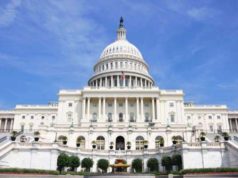
Introduction
The United States Senate has been an indispensable institution in American politics since its creation. As a coequal branch of the federal government, the Senate has played a vital role in shaping the development of American democracy. One of the most important aspects of the Senate is the debate procedure, which allows Senators to express their views on critical issues and to engage in legislative negotiations.
The Senate debate process is designed to ensure that all Senators have an opportunity to express their views on a particular piece of legislation. However, over time, the Senate debate process has become increasingly contentious and polarizing. This article will explore the history of Senate procedures, focusing in particular on the debate process. The article will also examine how this debate process has impacted American politics and the legal system.
Case Study: Senate Procedures – Debate
- History of the Senate Debate Procedure
The Senate debate procedure has a long and complex history. The Senate debate process is based on two principles: the principle of unlimited debate and the principle of cloture. The principle of unlimited debate means that any Senator has the right to speak as long as he or she wishes on any topic. The principle of cloture allows the Senate to end debate and move to a vote on a particular piece of legislation.
The Senate has employed different methods of ending debate over the years, including traditional filibusters, silent filibusters, and the nuclear option. The traditional filibuster involves a Senator speaking for as long as he or she can on a particular issue to prevent a vote on legislation. A silent filibuster occurs when Senators refuse to allow debate to end, but do not speak on the floor of the Senate.
The nuclear option is a more recent development in Senate procedures. The nuclear option allows a simple majority of Senators to end debate on a particular issue, rather than the traditional 60-vote threshold required for cloture. The nuclear option was first employed in 2013 by Senate Democrats to overcome Republican objections to President Obama’s appointments to the judiciary and executive branch.
- Key Players in Senate Debate Procedures
There are several key players in the Senate debate process, including the Majority Leader, the Minority Leader, and the Presiding Officer. The Majority Leader is responsible for setting the Senate agenda and scheduling legislation for debate. The Minority Leader, on the other hand, is responsible for representing the interests of the minority party and advocating for their views.
The Presiding Officer is responsible for maintaining order and enforcing Senate rules during debate. The Presiding Officer can also call for votes on motions, including motions to end debate using the cloture procedure.
- The Impact of Senate Debate Procedures on American Politics
Senate debate procedures have played a critical role in shaping American politics over the years. The Senate debate process is designed to be slow and deliberative, giving Senators time to fully debate and review legislative proposals. However, over time, the Senate debate process has become increasingly partisan and contentious.
The use of the filibuster has created a situation in which legislation can be stalled or blocked entirely, even if it has majority support in the Senate. This has led to significant gridlock in Congress, with little consensus or compromise on important issues.
The use of the nuclear option has also led to increased partisanship in the Senate. By allowing a simple majority to end debate, the nuclear option has eroded the importance of minority viewpoints and reduced the need for compromise and negotiation.
- The Impact of Senate Debate Procedures on the Legal System
Senate debate procedures have also impacted the legal system in significant ways. The Senate plays a crucial role in the confirmation of federal judges and executive branch nominees. The Senate is responsible for conducting hearings and reviewing the qualifications and fitness of nominees before voting on their confirmation.
The Senate filibuster has been employed to block or delay many nominees, including judicial nominees. This has led to significant delays in the confirmation process, creating a backlog of vacancies in the federal judiciary.
The use of the nuclear option has also impacted the confirmation process. By reducing the threshold for cloture, the nuclear option has made it easier for Presidents to confirm nominees with little or no support from the minority party.
- The Impact of Senate Debate Procedures on Legislative Development
Senate debate procedures have also impacted the development of legislation in significant ways. The Senate is often called the “world’s greatest deliberative body” because of its focus on thoughtful debate and compromise. However, the use of the filibuster and the nuclear option have eroded this tradition over time.
The filibuster has been used to prevent the passage of many critical pieces of legislation, including civil rights laws and environmental regulations. The nuclear option has also been employed to fast-track legislation without sufficient debate and review.
The use of these procedures has led to increased partisanship and decreased compromise in Congress, making it increasingly difficult to pass important legislation.
- The Future of Senate Debate Procedures
The future of Senate debate procedures is uncertain. There is growing concern about the impact of the filibuster on the legislative process, and some Senators have called for its elimination or modification.
There is also concern about the increasing use of the nuclear option and its impact on the Senate’s traditions of compromise and negotiation. Some Senators have called for a return to the traditional 60-vote threshold for cloture, arguing that this would force greater cooperation and compromise.
Ultimately, the fate of Senate debate procedures will depend on the willingness of Senators to work together to find common ground and compromise on critical issues.
- Famous Senate Filibusters
There have been many famous Senate filibusters in American history, including the 1939 filibuster against anti-lynching legislation, the 1957 filibuster against civil rights legislation, and the 2013 filibuster against the confirmation of CIA Director John Brennan.
One of the most famous filibusters in recent history was the 1964 filibuster against the Civil Rights Act. Senator Robert Byrd of West Virginia spoke for over 14 hours on the Senate floor in an attempt to block the bill from being passed.
- Key Debates in the Senate
The Senate has engaged in many key debates over the years on critical issues such as civil rights, healthcare, and taxation. One of the most recent and contentious debates in the Senate was over the repeal of the Affordable Care Act in 2017.
The Senate held several votes on different proposals to repeal and replace the law, but was ultimately unable to pass any legislation. The debate over healthcare has continued to be a critical issue in American politics, with Senators from both parties proposing different solutions to the problem of rising healthcare costs.
- Contributions of Senators to the Debate Process
Some Senators have made significant contributions to the Senate debate process over the years. Senator Robert C. Byrd of West Virginia was a strong advocate of the Senate’s traditions and procedures, and authored several books on Senate history and procedure.
Senator Strom Thurmond of South Carolina holds the record for the longest individual filibuster in Senate history, speaking for over 24 hours in an attempt to block the Civil Rights Act in 1957.
- Criticism of Senate Debate Procedures
Senate debate procedures have faced significant criticism over the years. Critics argue that the filibuster has been abused to prevent the passage of important legislation and to block the nominees of Presidents from different political parties.
Critics of the nuclear option argue that it will lead to increased partisanship and decreased cooperation in the Senate. Some Senators have called for a return to more traditional procedures, arguing that this would encourage greater cooperation and compromise.
Conclusion
Senate debate procedures have played a critical role in shaping American politics and the legal system over the years. The debate process is designed to be slow and deliberative, allowing Senators to fully consider and debate legislative proposals. However, the use of the filibuster and the nuclear option has eroded this tradition over time.
The future of Senate debate procedures is uncertain. There is growing concern about the impact of these procedures on the legislative process, and some Senators have called for their elimination or modification. Ultimately, the fate of Senate debate procedures will depend on the willingness of Senators to work together to find common ground and compromise on critical issues.
The actual proceedings that occur on the floor of the United States Senate and the discourse that occurs between the members of the Senate are known as the debate. Debates can take on many forms, but all deal with legislative aspects or matters that are brought upon the Senate, such as bills and law changes. The Senate actually has in placed codified rules that govern the process of a senatorial debate, which outlines for certain procedures and appropriate actions to be taken by Senators in order to part-take in a debate.
During debates, senators may only participate if they are called upon the presiding officer. The presiding officer can be the President of the Senate or any other senator he may choose to appoint with the responsibility of overlooking the procedures of the debate. A Senator may be recognized by rising to his feet. Under procedural standards, the presiding officers are charged with recognizing the first senator to rise to speak.
This practice, in reality, gives little control to the presiding officer regarding the actual course a debate may actually take. Both the Majority Leader and Minority Leader are given precedence and priority in the case that he/she rises at the same time as another Senator to be recognized to speak. All members of the Senate that rise to participate in the debate and deliver a speech must all address the presiding officer.
The speeches themselves are not to be addressed directly to any other member of the Senate, regardless if it is in direct response to that particular Senator’s speech. The presiding officer is to be addressed as “Mr. President” or “Madam President.” When speaking in relation to other members of the Senate, they are not to be referred directly by name.
Senators are referred to by their actual position, or by the state they represent. All addresses and speeches are delivered from a Senator’s desk. No Senator is allowed to interject or interrupt while another Senator has the floor and is addressing the chamber. If an interruption is sought, a Senator must first rise and be given consent to interrupt.
The consent for an interjection is addressed to the presiding officer, who will either allow it or restrict it. It is important to note that even though there is no legislation regarding time limits on the speeches of Senators, they can only speak a total of two times on any particular topic on the same legislative day.
Therefore, an actual legislative day may in fact be longer than a normal, calendar day. The presiding officer is also charged with the ability to bring a Senator that has violated the rules of the Senate during policy debate.
He may call for that Senator to be brought to order, at which time he/she must take his/her seat, and can not proceed or re-engage in the policy debate without a motion that he/she be allowed to proceed. Such motion, if granted, is not subject to debate. Appeals can only be made in the form of a Senator asking the presiding officer for another member of the Senate to be brought to order.
























